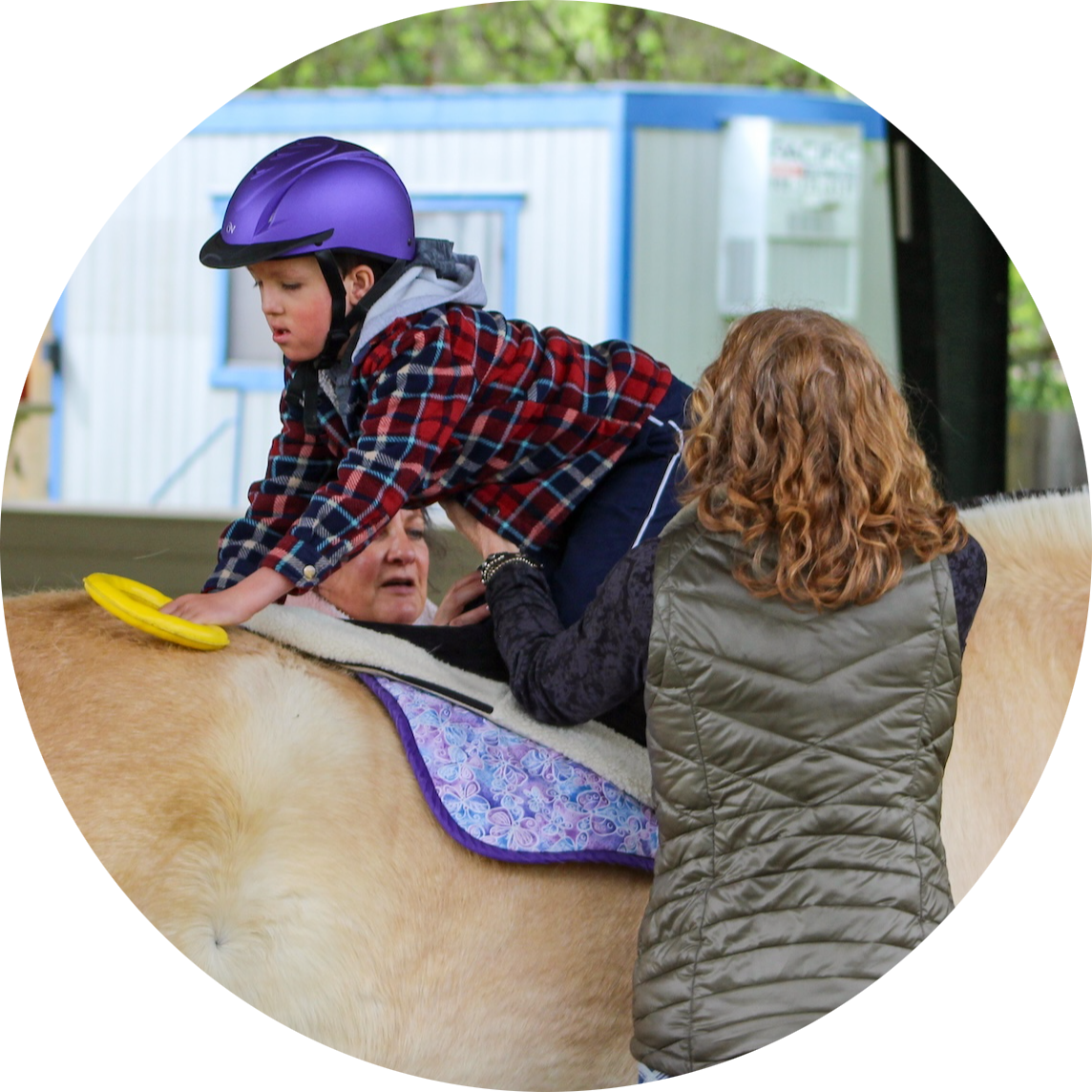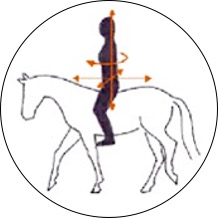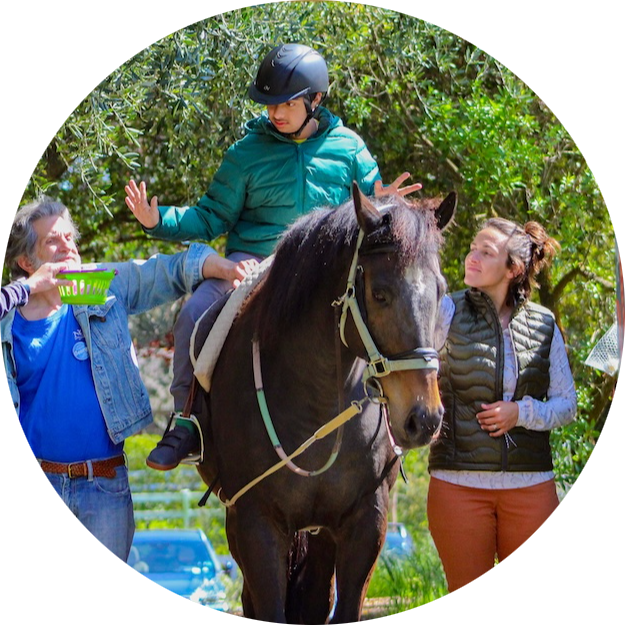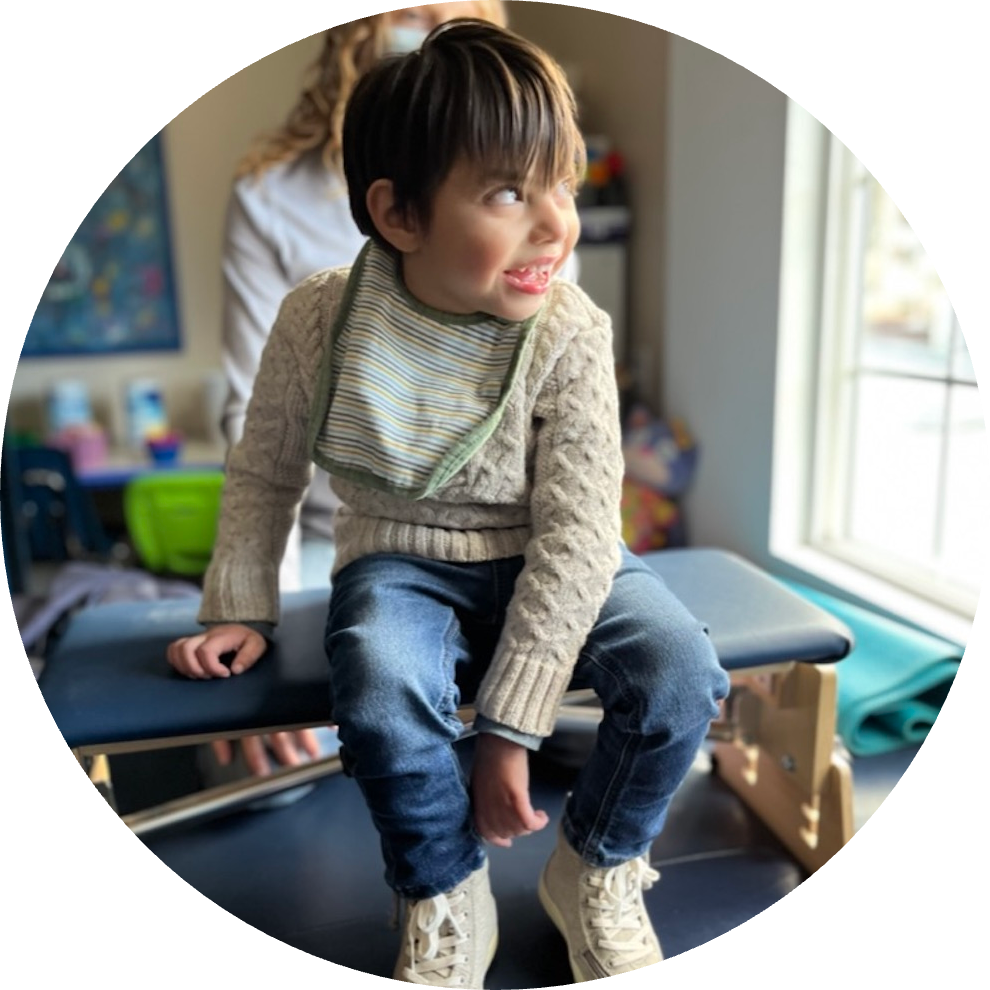Physical and Occupational Therapy
NCEFT offers Physical and Occupational Therapy in a variety of settings/environments in order to tailor treatment to a client’s individual needs and achieve functional outcomes and client/family goals. Sessions can be held in our indoor clinic, or outdoors incorporating medial-quality equine movement which has been proven to produce measurable and functional therapeutic results. Read more about this modality below.

Physical and occupational therapy incorporating medical-quality equine movement has been shown to produce measurable and functional therapeutic results. While sitting astride a horse in a forward-facing position, the client’s pelvis moves in the same multi-dimensional pattern and rhythm as it would if they were walking typically. Clients can can also be placed in other positions, such as on hands-and-knees, backwards, sideways, lying prone or supine over the barrel of the horse. Each position targets different cognitive and physical systems to achieve specific therapeutic goals.

The average horse takes approximately 100 steps per minute, providing clients with repetitive, rhythmic, and variable input through multidimensional movement on a dynamic base. During a single session, a client experiences up to 3,000 typical movement patterns they can use to improve function in daily life. As a horse changes tempo or moves through geometric figures, clients must adjust their posture to maintain a balanced position, resulting in increased core stabilization, postural control, protective reflexes, endurance, and motor planning. The horse’s movement also provides sensory input to vestibular, proprioceptive, tactile, and visual systems, facilitating changes in sensory integration and attentional skills.

Clients are assisted by a side-walker on either side of the horse, as well as horse handler, providing support during the session based on the therapist’s guidance. A side-walker’s primary job is to maintain the safety of the client at all times, as well as assisting in placing the client in the position requested by the therapist. Side-walkers go through rigorous training and are integral members of our treatment teams.

Physical and Occupational Therapy in NCEFT’s indoor clinic setting offers a comfortable and controlled environment for rehabilitation. Clients benefit from specialized equipment, skilled and licensed therapists, and personalized treatment plans tailored to their unique needs to gain strength, mobility, daily living skills, and independence.
Core strength and postural stability is necessary for many daily activities, such as:
- Reaching to grasp objects without losing balance
- Sitting upright to better attend and participate during activities
- Promoting optimal postural alignment for sound production and breath control to improve speech
- Tightening the abdominal structures involved in movement and improve the transfer of power to and from the extremities
- Teaching the muscles to work together efficiently and effectively
- Aiding in the prevention of injury
Typical diagnoses we treat include, but are not limited to the following. Please refer to our FAQ page for contraindications.
- Cerebral palsy
- Multiple sclerosis
- Down syndrome
- ADD/ADHD
- Autism
- Developmental delay
- Traumatic brain injury
- Stroke
- Spinal cord injury
- Sight or hearing loss
- Stroke
- Genetic disorders
- Amputation
- Learning or language disabilities
For additional client stories, please click here.
For more information and research articles about the use of medical-quality equine movement in Physical and Occupational Therapy sessions, please visit our Education and Resources page.
For current pricing, billing, insurance, and financial assistance information, please click here.